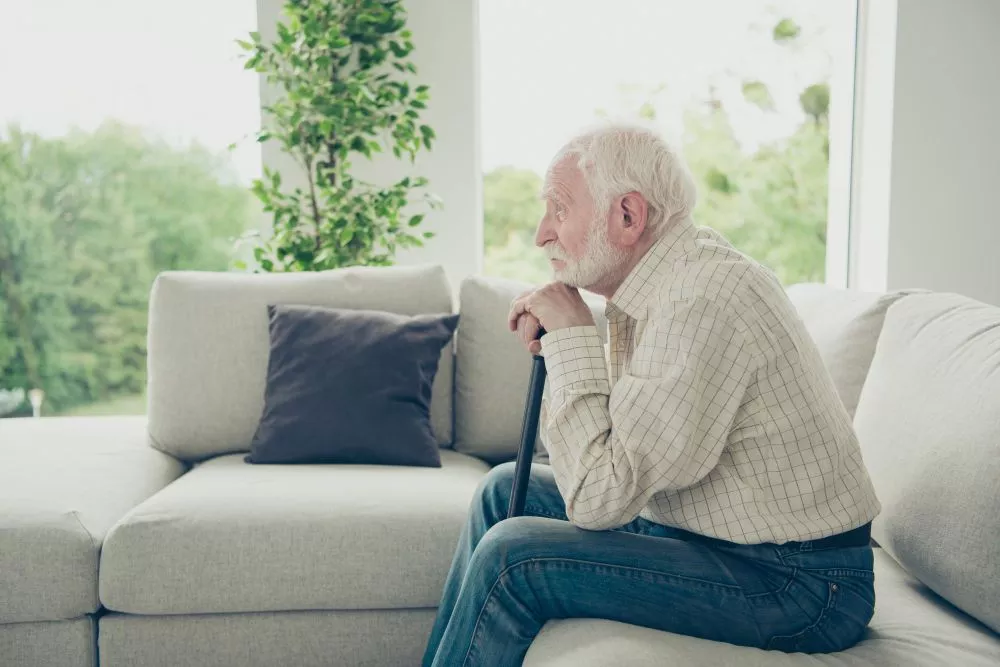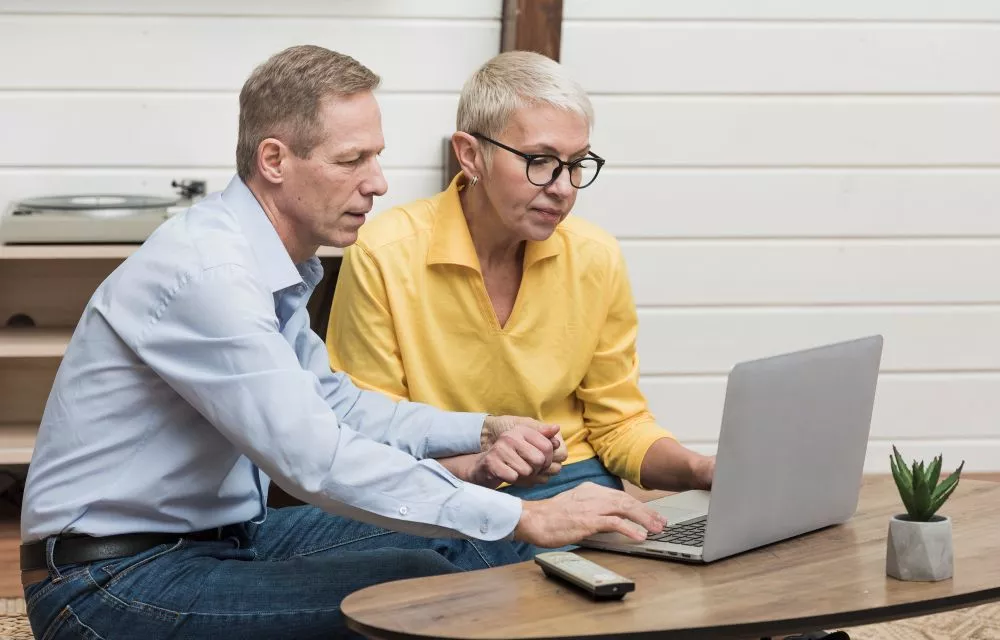Yoga benefits can be enjoyed at any age. The stretching, breathing, and meditation techniques of yoga can be a terrific approach for seniors who are searching for a risk-free, efficient way to improve their mental agility, physical health and general wellness. As you will see, daily yoga practice can actually have a variety of positive effects on older folks. Studies indicate that nearly 14 million Americans who are over the age of 50 practiced yoga in 2016. That is a sizable increase compared to the four million who did so in 2012.

The Advantages of Gentle Yoga for Seniors
Yoga combines stretching and strengthening postures with deep breathing and relaxation and fosters a connection between the mind and the body. Yoga has its roots in Eastern philosophy, but as it is performed in the West, it is typically centered on physical fitness. Yoga is not an overtly religious activity but still includes a spiritual component. It is a practice that can help people of many faiths and belief systems.
Yoga is safe for seniors of all levels of fitness or ability since the poses or asanas may simply be tweaked or customized to meet an individual’s needs. In fact, it can be a great way to maintain your body’s strength and health without putting unnecessary strain on your joints such as weightlifting or jogging. Additionally, there is never a wrong time to start practicing yoga. (Make sure to seek your doctor’s OK before you start.) The following are a few advantages of gentle yoga for seniors:
Better balance: Many yoga poses for seniors emphasize core stability and abdominal muscle strengthening. That can help improve your balance and lower your risk of falling.
Increased flexibility: For seniors, yoga poses are excellent stretching exercises. Holding a position for a few breaths enables your muscles and connective tissues to relax and soften, enhancing your range of motion. In fact, studies published in the International Journal of Yoga Therapy have demonstrated how regular yoga practice can significantly increase an older person’s general flexibility.
Improved breathing: Yoga breathing techniques, or pranayama, can increase lung capacity and enhance pulmonary health. According to studies, breathing function significantly improves in elderly ladies who practice yoga three times per week for 12 weeks.
Stronger bones: Try yoga if you’re concerned about osteoporosis and fragile bones. A regular yoga practice that incorporates weight-bearing poses can support bone strength in older adults. According to some encouraging studies, yoga may help postmenopausal women’s bone density.
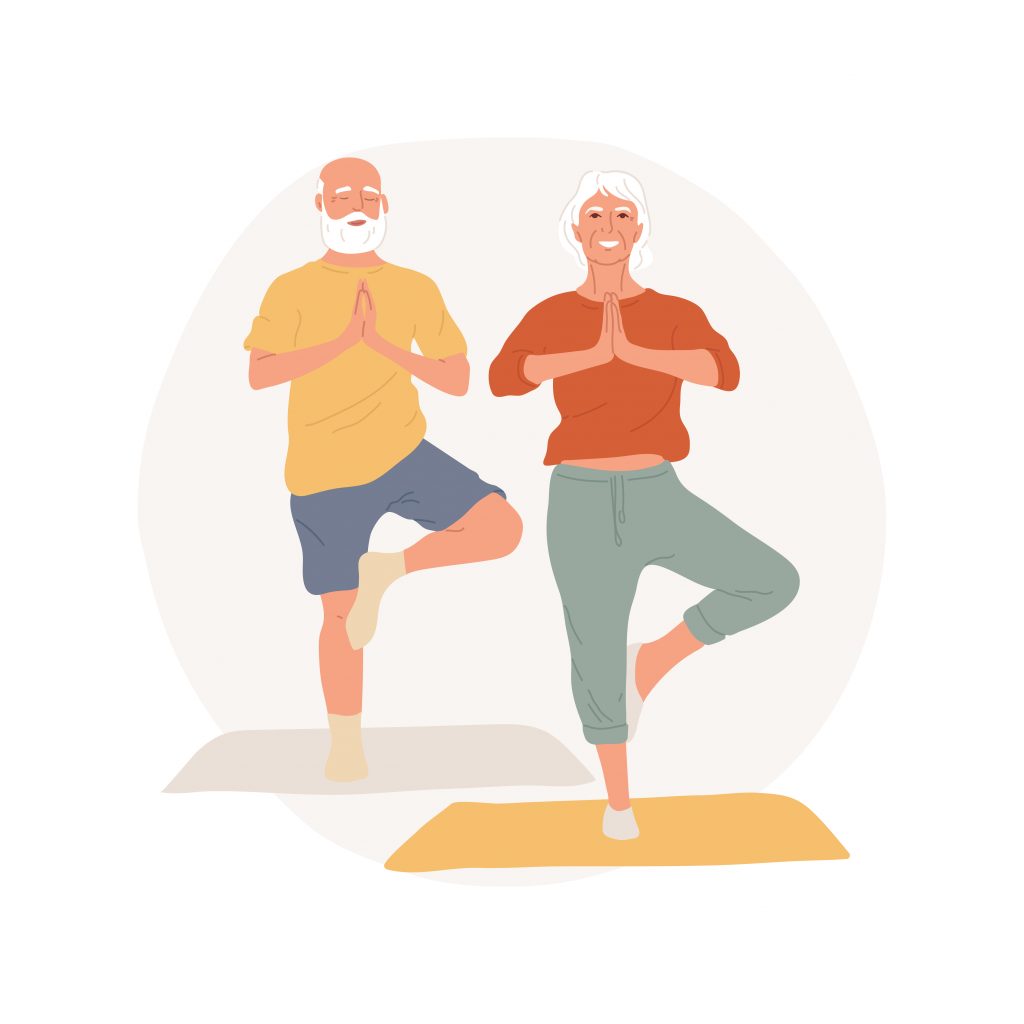
Reduced stress and anxiety: Yoga enables you to achieve serenity and mindfulness through meditation and attentive breathing. According to research, this can lessen cortisol levels, reducing anxiety and depressive symptoms. More than 85% of participants in a National Institutes of Health study who practiced yoga reported feeling less stressed as a result.
Better sleep: Sleep disruptions, a typical complaint among seniors, can be reduced with yoga. In a study published in Alternative Therapies in Health and Medicine, adults over 60 with insomnia took part in yoga classes twice a week and practiced daily at home. The group noted significant increases in both the quantity and general quality of their sleep after three months.
Gentle Yoga for Seniors- How to Begin?
Here, we take a look at the basic yoga positions and what you should accomplish before starting any yoga routine and offer some pointers to assist you in preparing:
Determine How Healthy You Are
While everyone can practice yoga at any age, those with certain medical conditions should avoid particular movements. For instance, those with glaucoma should avoid head-down or inverted stances as these positions can put more strain on the eyes. Therefore, it’s imperative to consult your doctor (as well as your instructor) before beginning even a basic yoga program.
Prepare Your Gear
Yoga requires flexible, comfortable clothing. Fitted clothing is ideal, especially for tops, because you will be bending into various postures and don’t want your shirt falling over your eyes. Fitted T-shirts or tank tops go well with leggings or jogging bottoms. Yoga is usually practiced barefoot, so you won’t typically require specific footwear. However, if you’re worried about losing your balance, you can wear non-slip socks or sneakers.
A yoga mat will also be necessary. Some studios offer these for free, while others require that you bring your own (and many people prefer to have their own for hygienic reasons). Find one that is long enough to hold your entire body while lying down and sticky enough to prevent slipping while trying to maintain a pose. Cheaper mats frequently contain PVC, but if environmental responsibility is important to you, pay attention to mats made of rubber, cotton, or jute.
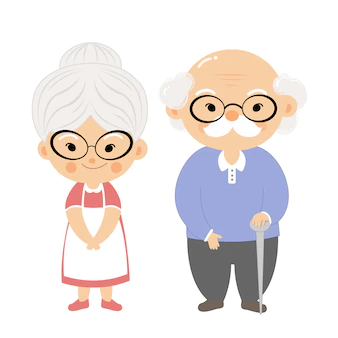
Most are an eighth of an inch thick, but some mats are a little thinner or thicker. Although thicker mats provide additional support for delicate joints, they can make standing balance poses more challenging. Moreover, they are heavier and more difficult to transport. If you exclusively practice at home, portability won’t be an issue, but if you want to carry your mat to and from a studio or community center, weight might be a point to consider.
Look for a Qualified Instructor
Finding a qualified instructor who knows the particular difficulties of people over 55 is crucial. Some yoga societies provide registers of qualified yoga instructors, including lists of yoga instructors who have completed special training that enables them to modify yoga programs, especially for senior citizens.
Ask prospective instructors about their teaching experience and whether they know how to work with older adults or those with fragile health. See an actual class to get a feel for the instructor’s methods if you can. Once you’ve decided on an instructor, let them know if you have any physical limitations, such as arthritis, back discomfort, balance issues, or high blood pressure.
Begin Slowly
By easing into yoga, you can gradually adapt to it. For instance, start by placing your hands on your thighs if your goal is to be able to bend over and touch your toes. Take a few slow, deep breaths, and then bend your knees. Reaching down to the middle of your shin requires another pause, several deep breaths, and so on. The key is not to stretch too much.
Never rush into new poses, and make sure you take enough time to rest after each pose. It’s better to wait until your body has fully adapted to your program before adding any new movements. Remember that practicing yoga is not about keeping up with those around you. Just move at your own pace.
Yoga poses should never be painful. You might feel stretched, but you shouldn’t let it go to the point that you feel pain. Ask your instructor for a modified position version if you cannot perform it comfortably. Almost every yoga pose can be modified to meet a variety of physical requirements. And if you need more support, don’t be afraid to use props like straps, blocks, walls, or chairs.
Read More: Alzheimer’s diagnosis and management
Yoga Styles for Senior Citizens
Yoga can be beneficial whether your goal is to become stronger and more flexible or you want to unwind and calm your thoughts. However, determining which style is best for you might be challenging, given the dozens of available variations. Remember that your health and level of fitness are important factors. Before starting a new fitness program, always check with your healthcare professional.
The following eight forms of yoga could be suitable for you:
Hatha: This is a general term that refers to any style of yoga that places a strong emphasis on physical postures. It is not truly a specific style. The majority of hatha yoga courses, however, consist of a slow-moving succession of sitting and standing positions. They usually focus on stretching and breathing instead of raising your heart rate or putting your leg up behind your head. For this reason, many people think hatha yoga is the greatest kind of yoga for beginners.
Iyengar: Iyengar yoga emphasizes perfect form and is deliberate and precise. Practitioners are urged to use props such as bolsters, straps, blocks, and incline boards to have a good posture. Seniors with arthritis or other chronic problems can benefit from this type of yoga since the props allow for a wide range of adaptations.
Restorative yoga: This calm, meditative yoga style is intended to passively release tension without stretching. Poses are held for a very long duration, often up to 10 minutes, and props are employed to completely support the body. Restorative yoga is the ideal type of yoga for seniors who want to develop relaxation and contentment. It is not uncommon for folks to nod off in class.
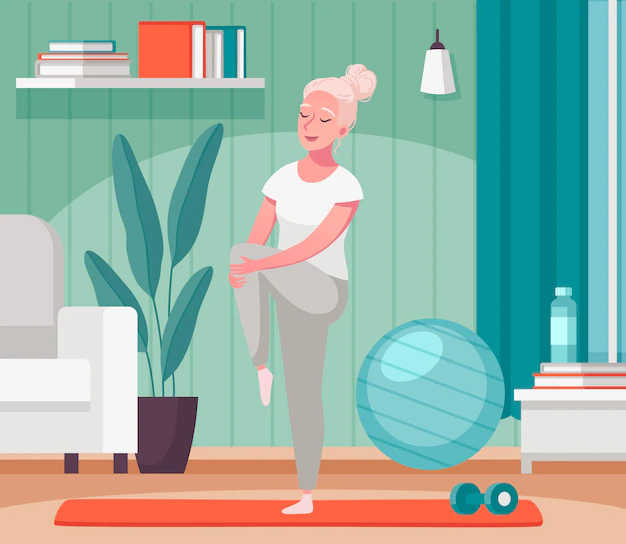
Yin: Yin yoga is slow and concentrates on holding poses for a lengthy period, similar to restorative yoga. Yin and restorative yoga vary in that yin focus on stretching deep connective tissues, whereas restorative yoga does not involve active stretching. Regular practice of yin yoga helps ease stiffness and improve flexibility.
Vinyasa: This is a catch-all phrase for many types of yoga that entail synchronizing breath with a succession of fluid movements. Although pacing can vary, routines are frequently rapid and smooth. In vinyasa, the poses themselves are not as important as the transitions between them. Some have compared it to dancing. Vinyasa yoga is challenging because it frequently involves strenuous physical activity, but seniors in pretty good physical shape could relish the challenge.
Ashtanga: Ashtanga is a physically demanding and quick-paced form of yoga with a set of positions that must be executed consistently. Some claim that ashtanga is the best style of yoga for losing weight because it is a strenuous exercise that increases circulation and heart rate. Some older folks find it helpful, but it is typically not advised for novices.
Bikram: The normal temperature in a Bikram yoga room is over 37 degrees. That ensures that you will sweat profusely after you spend 90 minutes moving through the sequence of 26 poses and two breathing techniques. Strengthening muscles and removing toxins from the body are the goals. However, there is a risk of overheating. Bikram is not recommended if you have signs of low blood pressure, high blood pressure, or a heart problem of any kind.
Kundalini: Seniors who are passionate about both the spiritual aspects of yoga may find kundalini, also known as the “yoga of awareness,” appealing. It incorporates moving into specific positions, breathing techniques, meditation, and chanting
Tree: The tree position is excellent for strengthening the lower body and enhancing balance. Modified forms can be carried out while standing or seated in a chair.
Downward-facing dog: Calves, hamstrings, and the lower back are stretched out in this stance, which also opens the chest. If you suffer from wrist issues, you can alter this posture by keeping your forearms on the floor.
Cat-cow: This traditional yoga posture helps strengthen the stomach muscles and develop spinal flexibility. You may also perform cat-cow from a chair.
Plank: The plank pose is essentially a push-up position with no actual lowering of the body. It’s great for strengthening the upper body and stabilizing the core. Keep your knees on the floor for a modified variation.
Triangle: This pose strengthens your core, hamstrings, and hips. Lower back pain and slow digestion can also decrease by this movement. The triangle position can also be performed while seated.
Warrior 1: This position strengthens your calves, ankles, and thighs while opening the chest and hips. Keep your hands on your hips if it’s too difficult to reach up.
Child’s pose: The child’s posture, frequently employed as a resting position, stretches the lower back, hips, and spine. It’s an effective technique to unwind, release stress, and settle your mind.
What Is Chair Yoga?
Classic yoga’s up-and-down motions are not for everyone. Seniors with difficulty with movement or balance can still benefit from yoga without needing to sit on a floor mat by doing chair yoga. Numerous postures, including forward bends, chest openers, and spinal twists, can be adjusted to be done from a chair.
Senior citizens can obtain the excellent health advantages of yoga through chair yoga. Their health is improved with chair yoga safely, and it also increases people’s access to yoga. Even older adults with limited mobility or those who are not flexible can safely practice yoga while remaining seated.
The advantages of chair yoga for senior citizens include soothing and stretching sore muscles, minimizing chronic pain, lowering stress levels, and enhancing circulation. Moreover, it eases tension, assists in lowering blood pressure, safeguard joints and improves strength and balance.
An at-home yoga regimen is the finest because it can be easily modified to fit your older adult’s ability. Any movements that hurt or are too strenuous should be avoided. If you tire easily, skip the more difficult portions of the program and only complete the easier ones.
The key priorities are security and comfort. Keeping yourself secure and comfortable comes first. None of these motions should be painful.
Ensure you move carefully, deliberately, and with attention to your body. Doing a bit less is preferable to taking a chance of getting hurt. You should only do those parts of the exercise that they feel comfortable doing. You will still gain from the exercises even if you can only do a portion of the motion or have to skip some moves. Your strength and flexibility will increase with time, expanding your range of motion.
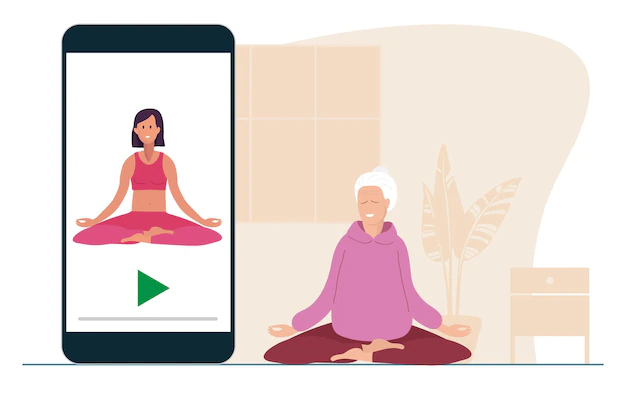
Yoga Classes
It’s highly recommended to start your yoga journey with a live class so you can receive individualized instruction from a seasoned instructor. To avoid injuries and get the most benefits, you must do the exercises properly. Additionally, many senior citizens value the social interaction that comes from routinely hanging out with people who have similar interests.
But how can you locate beginner yoga courses for seniors close to you? One choice is to contact local yoga studios, community centers, or health clubs to learn more about what they offer. Look for senior yoga classes that are mild or for beginners. If you’re looking for senior yoga classes, you can also try searching on the internet, specifying your location.
Last Word
Gentle yoga for seniors is a great way to improve mental well-being, physical agility, and general health. There are a variety of yoga styles you can choose from according to your preferences and fitness level. Always make sure to first check with your healthcare provider before embarking upon any form of new physical activity, including yoga. Start slow and steady, and enjoy your yoga experience!

